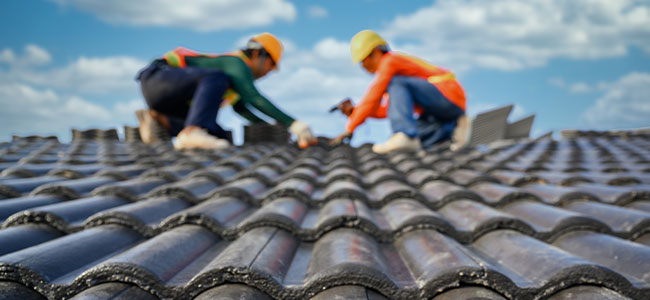
Improving Roofer Safety in 2024
Roofing is one of America's most dangerous professions, necessitating enhanced safety measures to reduce the annual fatalities and accidents.
- By Pat Overson
- Feb 26, 2024
Roofing work is an essential service for residential and commercial property owners across the country. A home or commercial space literally cannot function without a roof over it. The high demand for roofing services means a limited number of contractors are trying to meet an increasing demand. As more roofers work on roofs this year, it is important to remember that a roofing contractor occupies one of the most dangerous civilian professions in America.
Over 50 roofers are killed in roofing accidents every year, according to data from the Bureau of Labor Statistics. Only loggers deal with more workplace fatalities every year. The prevalence of workplace accidents and fatalities means that improving safety must always be a mission of each roofing company. Don’t be passive about safety standards. Here are a few practical steps to improve roofer safety this year.
Continuing and Engaging Education
The best tool to emphasize good safety standards is education, and sadly too many roofing companies don’t take safety education as seriously as they should. Often the safety conversation is a brief two-minute chat before a job or not having the conversation at all. Ideally, every roofing company would hold weekly safety meetings that are educational and engaging. Every week, companies should have a new and relevant safety topic to discuss.
For example, we recently had a cold streak come through so we spent our safety meeting discussing how to protect from frost and cold on a slippery roof. Accordingly, we’re planning a long meeting about dealing with heat exhaustion right before the summer arrives. The key is making sure the safety meetings are engaging. Don’t just have management talk to their team. Pose hypotheticals to them and ask them questions about how a safety process is supposed to be implemented on a job site.
Make sure the team knows the safety standards. Make sure they know how to use the equipment and test them on that equipment use. Wearing a safety harness is something a roofer knows how to do, but still have them practice applying one while not on a job site. Treat safety meetings like school. Repeat the same safety info constantly so the team retains it and make team members who missed the meeting reschedule so that they can also get the information.
Don’t skimp on the safety meetings this year. Conduct more of them and make them more engaging.
Double Up on Safety
Roofers working alone on a job is sadly an all too common occurrence in our industry. Working alone increases the risk of serious injury exponentially. If roofers stopped doing solo jobs, our industry could dramatically decrease workplace injuries. It’s impossible to fix the whole industry, but it is possible to ensure that a roofing team isn’t conducting solo roofing jobs in 2024. Ask roofers to work in pairs no matter how small the job is. This can often be hard for small roofers who are trying to complete a backlog of jobs, but losing a team member to injury is going to lead to worse outcomes. Take extra time to complete their jobs and always have at least two people work a job.
Safety First Superintendents
Competent superintendents are essential for any roofing team, and it is important to only hire superintendents with a proven safety record. Rather than just promoting superintendents from within, assess someone’s commitment to safety in real time. Don’t promote the guy that has too many writeups. Promote the guy who has little to no writeups. A good superintendent will spend time with his team on safety initiatives, inspecting PPP gear and writing up contractors breaking safety rules. Hire competent superintendents who take safety seriously this year.
Safety Off Roof
Safety doesn’t just apply when the team is on a roof. Make sure the team is being safe on the ground as well. This means making sure tools and debris are safely secured in the back of the vehicle. It means the team is being safe driving to and from the job site. Roofing companies often don’t teach this type of safety, and it is important. A good way to ensure the team is driving safely is to install GPS on all company-owned trucks. These can monitor where team members are and most importantly how fast they are driving.
Vehicle Maintenance
Poorly maintained vehicles in the fleet are a huge safety risk to everyone on the road. A truck with low tire pressure can cause a tire to pop and the truck to crash, while old and cracked windshields can obstruct vision. Assign someone on the team to do routine truck inspections and schedule maintenance when needed. Inspecting the trucks will prevent accidents and save money on costly emergency repairs.
Roofing is a dangerous job, which is why roofers need to improve their safety strategy this year. Create frequent and engaging safety courses, have workers in teams no matter how small the job is, and be safe driving to and from a job site. Taking these steps will help prevent accidents that will hurt the health of anyroofing company.
This article originally appeared in the June 2024 issue of Occupational Health & Safety.